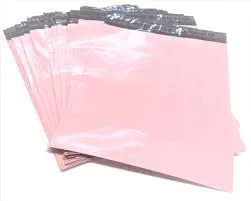High-Quality Laminated PP Woven Bag Production for Various Applications
The Rise of Laminated PP Woven Bags in the Manufacturing Industry
In recent years, the demand for eco-friendly and durable packaging solutions has surged, making laminated polypropylene (PP) woven bags a popular choice among manufacturers and consumers alike. These bags offer an ideal combination of strength, versatility, and sustainability, making them a staple in various industries ranging from agriculture to retail. This article explores the benefits, manufacturing processes, and applications of laminated PP woven bags, shedding light on why they have become the preferred packaging choice for many businesses.
Understanding Laminated PP Woven Bags
Laminated PP woven bags are made from polypropylene fibers that are woven together to form a robust fabric. This fabric is then laminated with a layer of plastic, which enhances its strength and provides a moisture-resistant barrier. The combination of woven polypropylene and lamination results in bags that can withstand heavy loads, resist wear and tear, and keep contents dry, making them suitable for both bulk storage and transportation.
Benefits of Laminated PP Woven Bags
1. Durability One of the primary advantages of laminated PP woven bags is their exceptional durability. They can hold heavy weights without tearing, which is essential for industries like agriculture, construction, and chemical manufacturing.
2. Water Resistance The lamination process creates a moisture barrier, ensuring that the contents remain dry even in challenging weather conditions. This feature is particularly beneficial for businesses dealing with grains, fertilizers, and other moisture-sensitive products.
3. Cost-Effective While the initial investment may be higher than traditional paper or plastic bags, the long lifespan of laminated PP woven bags results in lower overall costs. They can be reused multiple times, reducing the need for constant repurchasing.
4. Environmentally Friendly As more companies seek sustainable options, laminated PP woven bags align with eco-conscious practices. They are fully recyclable and can be repurposed into other products, contributing to a circular economy.
laminated pp woven bag manufacturer

5. Customizability Manufacturers can easily customize laminated PP woven bags in various sizes, colors, and designs. This flexibility allows businesses to create branding opportunities through printed logos and graphics, thereby enhancing market visibility.
Manufacturing Process
The manufacturing of laminated PP woven bags involves several steps. First, polypropylene granules are melted and extruded into fibers. These fibers are then woven together to create a durable fabric. The next step involves applying a layer of lamination, usually through a coating process that adheres the plastic layer to the woven fabric. After the lamination, the bags are cut and stitched according to the desired specifications. Quality control checks ensure that the finished products meet industry standards before they are shipped to clients.
Applications Across Industries
Laminated PP woven bags find applications across various industries
- Agriculture These bags are commonly used for packing grains, seeds, fertilizers, and animal feed, protecting the contents from pests and moisture. - Retail Many retail stores opt for laminated PP woven bags as reusable shopping bags, appealing to environmentally conscious consumers. - Construction In construction, these bags can hold materials like sand, gravel, and cement, ensuring safe and easy transportation. - Food Industry Certain laminated PP woven bags are designed for food packaging, providing hygiene and safety while maintaining product freshness.
Conclusion
As the manufacturing industry continues to evolve, laminated PP woven bags are emerging as a leading packaging solution. Their combination of durability, water resistance, cost-effectiveness, and environmental friendliness makes them highly desirable for businesses seeking sustainable packaging alternatives. Whether in agriculture, retail, or construction, laminated PP woven bags are set to play an essential role in shaping the future of packaging. As awareness of eco-friendly practices grows, more manufacturers will likely turn to these innovative solutions, underscoring their importance in a rapidly changing market.
-
The Best Uses for Small Trash Bags in Daily LifeNewsJul.01,2025
-
Stylish Reusable Grocery Bags TrendsNewsJul.01,2025
-
Shipping Advantages of Using Bubble Envelopes BulkNewsJul.01,2025
-
How Compostable Mailing Bags Reduce Environmental ImpactNewsJul.01,2025
-
Environmentally - Friendly Bulk Poly MailersNewsJul.01,2025
-
Eco Friendly Custom Laminated Tote BagsNewsJul.01,2025
-
Have the freedom of customizing your custom mailers any way you want! Our dedicated packaging support will help deliver you the mailing experience you need to elevate your shipping experience to the next level! Start making a strong impression on your customers and stand out from your competitors! -
LIYA uses high quality raw materials which directly purchased from large enterprises domestic and overseas such as PetroChina, Sinopec, Sabic, Equate, ExxonMobil, Dow Chemical, Total, and Borouge, ensuring the price advantage and quality of the raw materials. -
LIYA uses high quality raw materials which directly purchased from large enterprises domestic and overseas such as PetroChina, Sinopec, Sabic, Equate, ExxonMobil, Dow Chemical, Total, and Borouge, ensuring the price advantage and quality of the raw materials.





